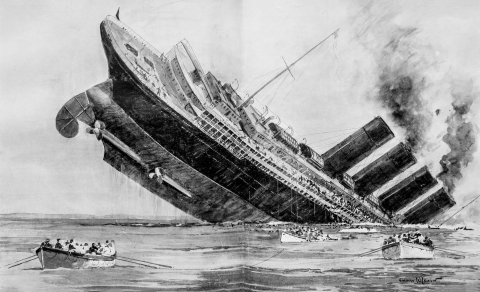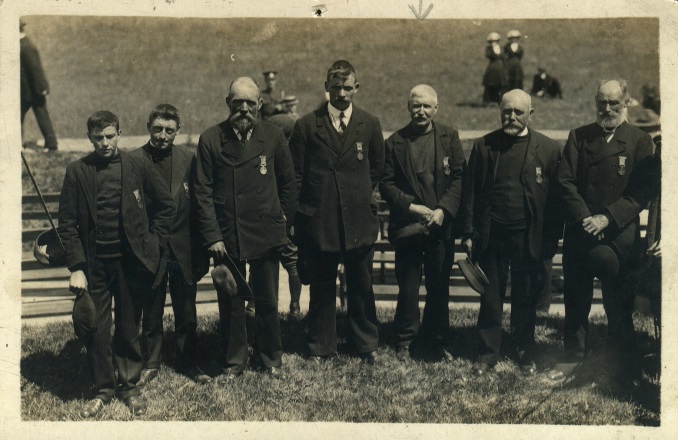Sinking of Lusitania on May 7th 1915

The ocean liner RMS Lusitania was built by John Brown and Company of Clydebank, Scotland and was launched by Cunard in 1906. At one time it held the coveted Blue Riband, which is the accolade given to the passenger liner crossing the Atlantic Ocean in regular service with the record highest speed. Lusitania was also briefly the world's largest passenger ship. The ocean liner was travelling from New York to Liverpool in 1915 on its 202nd cross Atlantic trip, when on the afternoon of 7th May it was hit by a torpedo fired from a German U-boat. It sank off the southern coast of Ireland, roughly 11 miles off the Old Head of Kinsale (Irish, An Seancheann) resulting in the deaths of 1,198 passengers and crew.
This was at the time of World War I and when German submarine warfare was intensifying in the Atlantic. Germany had declared the seas around Britain and Ireland an exclusion zone, where vessels were liable to search and attack. Lusitania was inside the declared war zone when torpedoed and Germany also pointed to her carrying shells and cartridges as a justification for the attack. She sank in just eighteen minutes and it was to be two hours before rescuers heading from Ireland reached the scene. However, there was a small Manx sailing ship, The Wanderer, from the port of Peel (Manx: Purt ny h-Inshey) in the Isle of Man (Mannin) fishing a few miles off Kinsale. A crew member noticed the Lusitania listing.
They managed to take on board 160 men, women and children, including a two month old baby, while others clung desperately to the sides of the vessel. Towing two lifeboats from the stricken Lusitania as well, they sailed towards the Old Head of Kinsale. Two miles from land The Wanderer passed on the survivors to a tug called the Flying Fish, which delivered the survivors to the Irish port of Cobh, then known as Queenstown. The gallant little Wanderer, then returned to the site of the disaster, but found no further survivors. The names of the crew were: William Ball (skipper) of Jurby, and his son, Stanley, William Gell of Ramsey, Thomas Woods, Robert Watterson, John Macdonald, and Harry Costain, (all of Peel). The vessel was owned by Mr Charles Morrison also of Peel.
Images: Sinking of the Lusitania. Engraving by Norman Wilkinson, The Illustrated London News, May 15, 1915. Photo of the crew of the Wanderer courtesy of the Leece Museum in Peel.







